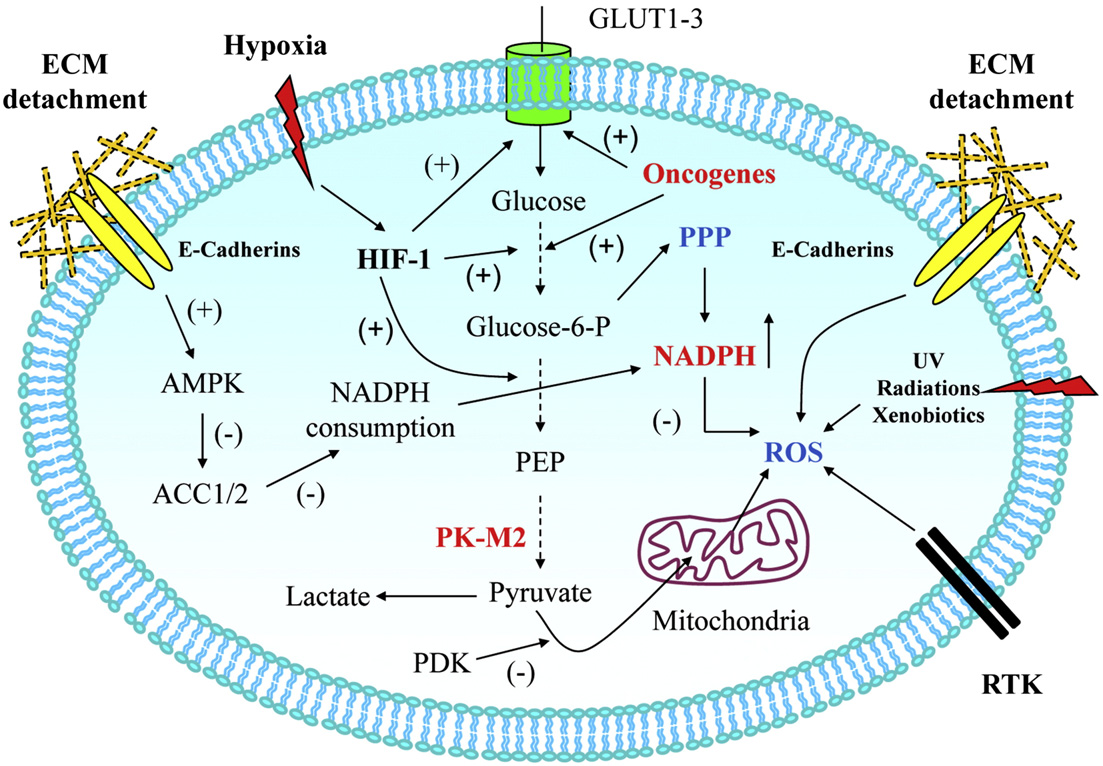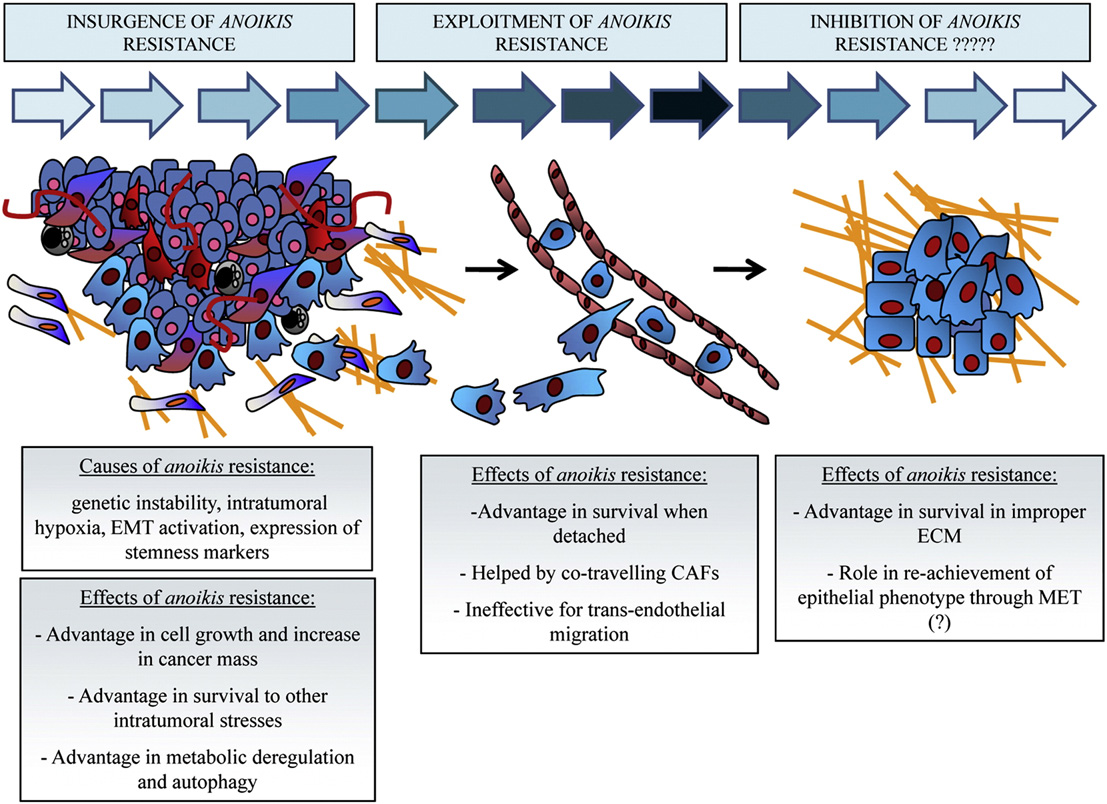Anoikis
Anoikis Overview
Anoikis: A form of programmed cell death triggered when cells detach from the extracellular matrix (ECM), preventing inappropriate cell growth in new locations, thus discouraging metastatic spread.
Key Features in Cancer: Resistance to anoikis is crucial for cancer progression, allowing cells to survive and proliferate in detachment or inappropriate attachment situations.
Mechanisms of Anoikis Resistance
Integrin Repertoire Changes: Cancer cells adapt by altering integrin expression to survive in various environments.
Pro-Survival Signals Activation: Various pathways (oncogene activation, growth factor receptor overexpression, sustained autocrine signaling) activate anti-apoptotic signals, enabling survival upon detachment.
Tumor Microenvironment Influence: Factors such as matrix stiffness, oxidative stress, and soluble factors can enhance anoikis resistance, leading to metabolic alterations in cancer cells.
Molecular Pathways of Anoikis
Caspases Role: Anoikis culminates in caspase activation, leading to apoptosis.
Intrinsic Pathway: Triggered by mitochondrial perturbations, controlled by Bcl-2 family proteins.
Extrinsic Pathway: Initiated by death receptors (e.g., Fas, TNFR), leading to caspase-8 activation and subsequent apoptosis.
Protective Mechanisms in Healthy Cells
Cell Adhesion to ECM: Integrin engagement triggers survival signals, preventing apoptosis; specific integrins (α5β1, αvβ3) are crucial for protecting against anoikis.
Lack of Adhesion During Migration: Cells in temporary non-adhesive states (e.g., during migration) are still protected through signaling active during movement.
Cell-Cell Contacts: Cadherins contribute to survival signaling, preventing anoikis; blocking cadherin binding induces anoikis.


Key Players in Anoikis Resistance
Growth Factor Receptors: Overexpression or activation of various receptor tyrosine kinases (e.g., EGFR, TrkB) promotes survival signalling.
Hypoxia and ROS: Chronic oxidative stress can lead to pro-survival signaling, rendering cancer cells resistant to anoikis.
Metabolic Adaptations: Cancer cells exhibit metabolic reprogramming (Warburg effect) to support proliferation and survival during detachment.
Anoikis Resistance in Cancer Cells
Integrin Switch: Abnormal integrin expression profiles contribute to anoikis resistance during cancer progression.
Constitutive Pro-Survival Pathway Activation: Signaling pathways such as PI3K/Akt and MAPK are critical for anoikis resistance.
Epithelial-Mesenchymal Transition (EMT): This process facilitates detachment and enables cancer cells to migrate by altering adhesion properties while enhancing resistance to apoptotic signals.
MicroRNA Regulation: MiRNAs can modulate elements of the cell survival pathway, influencing resistance to anoikis and cellular plasticity.
Implications and Therapeutic Targets
Potential Therapies: Targeting key pathways involved in anoikis resistance represents a promising strategy for anti-metastatic therapies.
Understanding Signalling Hierarchies: Identifying critical mechanistic players in anoikis resistance may enhance therapeutic efficacy by focusing on cancer cells' survival mechanisms during detachment.